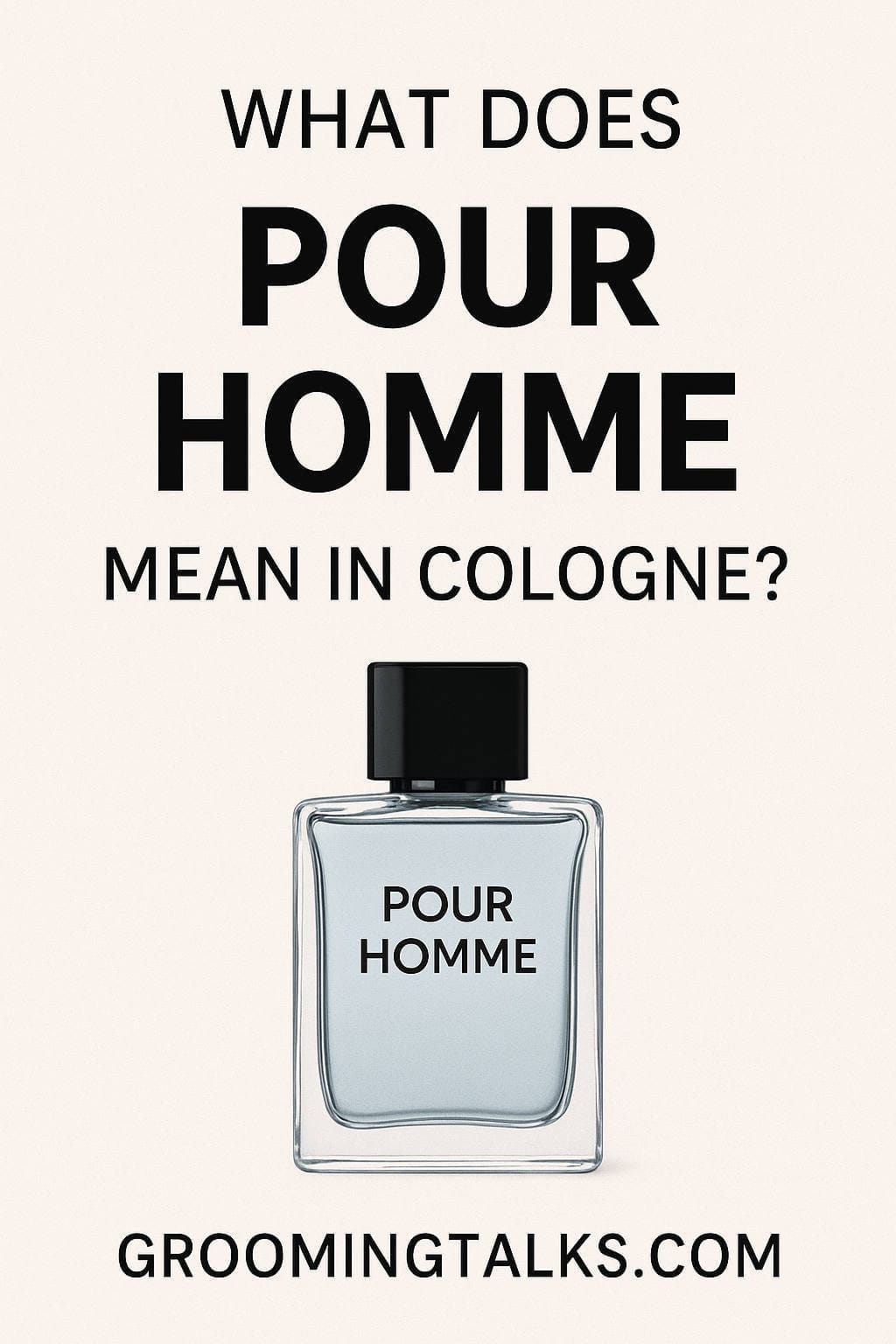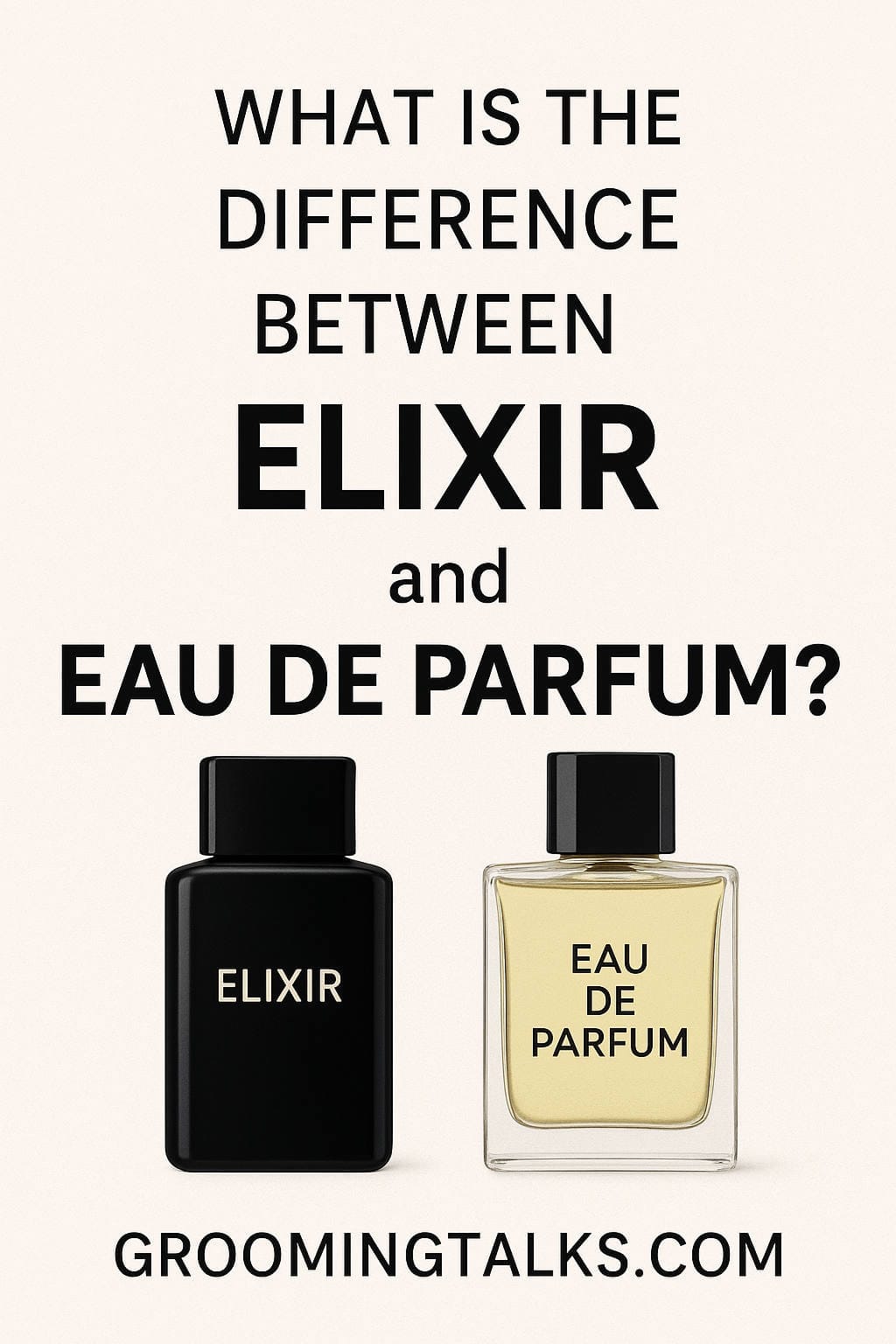When browsing through the fragrance aisle, you’ve probably seen the term “Pour Homme” featured prominently on bottles of cologne. It’s an elegant-sounding phrase that adds a touch of sophistication to the packaging, but what exactly does it mean? And more importantly, what does it say about the fragrance inside the bottle?
Whether you’re a fragrance enthusiast or just looking to find the perfect cologne, understanding the meaning and implications of “Pour Homme” can enhance your shopping experience. This comprehensive guide dives into the origins, usage, and cultural significance of the phrase, along with tips for choosing the right scent and navigating the evolving landscape of men’s fragrances.
What Does “Pour Homme” Mean?
“Pour Homme” is French for “For Men.”
In the context of cologne and perfumery, it simply indicates that the fragrance is marketed towards men. The label is meant to convey that the scent profile inside the bottle is traditionally masculine. It’s a straightforward marker of the intended audience, yet its connotations go far beyond mere translation.
French is often used in the fragrance industry to evoke luxury and elegance. Even if a brand isn’t French, using French terms like “Pour Homme” (for men) or “Pour Femme” (for women) signals refinement and aligns the product with the world of high-end fashion and sophisticated perfumery.
Why French? The Language of Fragrance and Luxury
France, particularly the town of Grasse, is known as the historical center of perfume making. French fragrance houses like Chanel, Dior, and Guerlain have shaped the global fragrance industry with their iconic creations.
As a result, French terminology has become the gold standard in perfumery. Words like “Eau de Toilette,” “Eau de Parfum,” and “Pour Homme” are more than just marketing lingo—they connect a product to centuries of perfumery tradition. For many consumers, French terms carry an implied promise of quality and sophistication.
So when you see “Pour Homme” on a cologne bottle, it’s not only telling you the fragrance is for men—it’s also trying to elevate the product’s image through a connection with the French heritage of perfumery.
What Does a “Pour Homme” Fragrance Typically Smell Like?
Though personal preferences vary, colognes labeled “Pour Homme” often share some common scent characteristics associated with masculinity.
1. Woody Notes
Woody elements like sandalwood, cedar, and vetiver are frequent base notes in men’s fragrances. They lend an earthy, grounding quality that is both warm and stable.
2. Spicy Accents
Spices such as cardamom, black pepper, and cinnamon are often added to provide warmth and intrigue. They give the fragrance depth and character.
3. Herbal and Aromatic Scents
Fragrances may include herbs like sage, basil, rosemary, and lavender. These notes are commonly found in the traditional “barbershop” style colognes, creating a clean and invigorating aroma.
4. Citrus Top Notes
Many men’s fragrances begin with a citrusy freshness—think lemon, bergamot, or grapefruit. These notes are uplifting and perfect for daytime wear.
5. Leather, Musk, or Tobacco
To enhance masculinity and longevity, many “Pour Homme” colognes contain bold base notes like musk, leather, tobacco, or smoky accords. These ingredients contribute to a strong, long-lasting dry-down phase.
While these traits are common, they are not universal. Modern fragrance design increasingly embraces variety and challenges traditional gender boundaries.
Gender Labels in Fragrance: “Pour Homme,” “Pour Femme,” and Beyond
In the fragrance industry, categorizing scents by gender has been a longstanding norm. Here’s a breakdown:
“Pour Homme” (For Men)
- Target: Male consumers
- Typical Notes: Woody, spicy, herbal, citrus
- Packaging: Bold, minimalist, darker tones
“Pour Femme” (For Women)
- Target: Female consumers
- Typical Notes: Floral, sweet, powdery, fruity
- Packaging: Feminine colors, elegant or ornate designs
Unisex or Gender-Neutral Fragrances
- Target: Anyone
- Typical Notes: Balanced between fresh, woody, floral, and spicy
- Packaging: Neutral, minimal, modern aesthetics
While these categories can guide purchases, they are not rules. Scent is subjective. People of any gender can wear any fragrance they enjoy. In fact, many women love the bold and grounded profiles of “Pour Homme” colognes, while men may prefer the softness or sweetness of traditionally feminine perfumes.
Can Women Wear “Pour Homme” Fragrances?
Absolutely! There is no rulebook that says women can’t enjoy colognes labeled “Pour Homme.”
Some women even prefer men’s fragrances because they tend to avoid overly sweet or floral notes and instead offer a more grounded, fresh, or spicy aroma. If a scent resonates with you, regardless of how it’s marketed, you should feel empowered to wear it.
In recent years, more and more people are rejecting rigid gender labels in fragrance. The rise of niche and indie brands has fueled the trend of personalized scent expression over traditional roles.
Tips for Choosing the Right “Pour Homme” Cologne
The fragrance world is vast, but with the right approach, you can find a cologne that perfectly matches your style and preferences. Here’s how:
1. Understand Fragrance Notes
- Top Notes: The initial scent, lasting a few minutes
- Heart (Middle) Notes: The core of the fragrance, lasting several hours
- Base Notes: The final, lingering aroma that can last all day
Understanding how a fragrance evolves will help you choose one that stays appealing throughout the day.
2. Try Before You Buy
Always test a fragrance on your skin. Body chemistry can significantly alter how a scent smells on you compared to a test strip or in the bottle.
3. Match the Occasion
- Work or daytime: Fresh, clean, light citrus or aquatic notes
- Evening or formal events: Spicy, woody, or musky scents
- Romantic occasions: Warm, sensual fragrances with vanilla, amber, or leather
4. Consider the Season
- Summer/Spring: Light, fresh, citrusy colognes
- Fall/Winter: Rich, warm, spicy, or smoky scents
5. Follow Your Nose
Don’t be afraid to go against the grain. If you enjoy floral, fruity, or gourmand notes traditionally labeled as feminine, embrace them.
Best-Selling and Classic “Pour Homme” Fragrances to Explore
To help you navigate the market, here are some tried-and-true colognes that proudly bear the “Pour Homme” label:
Versace Pour Homme
- Type: Fresh and aquatic
- Notes: Lemon, neroli, cedarwood, tonka bean
- Best For: Everyday use, spring and summer
Dior Sauvage Eau de Toilette
- Type: Spicy and aromatic
- Notes: Bergamot, pepper, ambroxan
- Best For: Evening wear, colder months
Chanel Bleu de Chanel
- Type: Woody and citrusy
- Notes: Grapefruit, incense, sandalwood
- Best For: Year-round versatility
Yves Saint Laurent La Nuit de L’Homme
- Type: Warm and spicy
- Notes: Cardamom, lavender, vetiver
- Best For: Date nights and evening events
Dolce & Gabbana Pour Homme
- Type: Aromatic fougère
- Notes: Citrus, lavender, tobacco, tonka bean
- Best For: Casual sophistication
These options represent a mix of freshness, complexity, and allure. Sampling them can help you understand what scent families you gravitate toward.
The Changing Definition of Masculinity in Fragrance
Today’s fragrance industry is witnessing a shift. Traditional ideas of masculinity are giving way to more inclusive and fluid interpretations. More men are embracing floral and sweet notes, while unisex and niche fragrances continue to gain popularity.
Perfume houses are responding to this shift by creating fragrances that don’t adhere strictly to gendered formulas. As consumers seek more authenticity and personal expression, the importance of how a fragrance makes you feel outweighs whether it’s labeled “Pour Homme” or not.
This cultural evolution is exciting. It opens doors to creativity and empowers individuals to wear scents that reflect their personality, not societal expectations.
Final Thoughts: The True Meaning of “Pour Homme”
So, what does “Pour Homme” really mean?
On the surface, it’s a simple French phrase indicating a fragrance designed for men. But dig deeper, and it becomes a symbol of heritage, sophistication, and evolving identity. It represents the legacy of French perfumery while also highlighting the way fragrance can be both deeply personal and widely influential.
In a world increasingly moving toward inclusivity, “Pour Homme” is less of a boundary and more of a stylistic suggestion. Let your scent speak for who you are, not who marketing says you should be.
Frequently Asked Questions (FAQs)
Q: What is the literal translation of “Pour Homme”?
A: It translates to “For Men” in French.
Q: Does “Pour Homme” mean only men should wear it?
A: No. Anyone who enjoys the scent can wear it, regardless of gender.
Q: Are “Pour Homme” fragrances stronger than “Pour Femme”?
A: Not necessarily. Strength depends on fragrance concentration and ingredients, not the gender label.
Q: What’s the difference between Eau de Cologne, Eau de Toilette, and Eau de Parfum in “Pour Homme” products?
A: These terms refer to concentration levels: Eau de Cologne (2-5%), Eau de Toilette (5-15%), Eau de Parfum (15-20%). The higher the concentration, the longer the scent lasts.
Q: Is it acceptable to wear “Pour Homme” cologne during the day?
A: Yes. Just choose lighter, fresher versions for daytime and stronger, spicier ones for evening.
Q: Do unisex fragrances smell like “Pour Homme” scents?
A: Some do, especially those with woody or spicy profiles, but they usually aim for balance between masculine and feminine notes.
By understanding what “Pour Homme” means and recognizing the deeper context behind the label, you’re better equipped to choose a fragrance that fits your lifestyle and preferences. So go ahead—explore, experiment, and wear what makes you feel your best.






